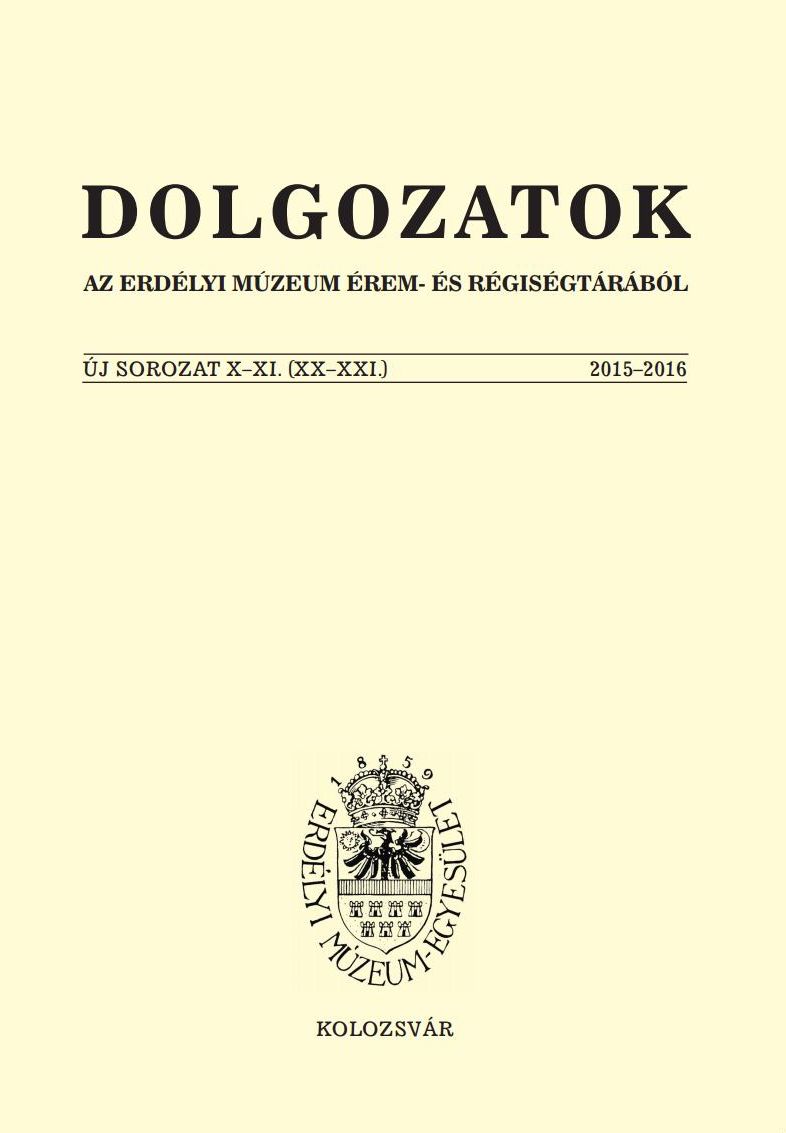Cserni Béla és az erdélyi városi régészet kezdetei
Béla Cserni and the beginnings of urban archaeology in Transylvania
Author(s): Csaba SzabóSubject(s): Archaeology, Cultural history, Ancient World
Published by: Erdélyi Múzeum-Egyesület
Keywords: Béla Cserni; Apulum; Alba Iulia; history of archaeology; urban archaeology
Summary/Abstract: Béla Cserni (1842–1916), also known as Adalbert or Albert Cserni was one of the most acclaimed intellectuals of Gyulafehérvár (Ro: Alba Iulia; Ger: Karlsburg) in the 19th century. His autodidactic endeavour to turn himself from a modest teacher into a renowned archaeologist and founder of the local museum is a remarkable example of one’s possibilities in the Belle Époque in Europe, when archaeology became a discipline in universities, the material evidence of the past was collected by centralised institutions and the cultural heritage became a relevant agent in the contemporary ideologies. He spent his childhood in the orphanage of Nagyszeben (Ro: Sibiu; Ger: Hermannstadt), where he gained the basics of his classical education and Christian moral. He used later his network of relations inside the Catholic Church as a tool in his diplomatic negotiation between institutions and personalities of his age. Witnessing the destruction of the Colonia Aurelia Apulensis in 1867–1868, his interest towards history and archaeology became a devotion. In 1886 he was one of the founding members of the Association dedicated to collect and preserve the cultural and archaeological heritage of Alsó-Fehér County (Ro: Comitatul Alba de Jos; Ger: Komitat Unterweißenburg). Between 1888 and 1908 he excavated the palace of the governors of Dacia (although he never interpreted correctly the functionality of the building). At that point this was the biggest urban excavation in Central- East Europe and the first praetorium consularis ever discovered and systematically researched in the world. His work from the Alsóváros and later in the territory of the Colonia Aurelia Apulensis (Hu: Marosportus; Ro: Partoș) was the first urban excavation in Transylvania and represents the beginnings of urban archaeology and public archaeology in the region. His rich correspondence with specialists all over Europe helped his endeavour as a scholar and his self-education as archaeologist, but it also made Apulum, a previously unknown Roman settlement in the foggy area of Transylvania one of the most cited Roman cities among the greatest classical scholars of Europe in the Belle Époque. Cserni visited numerous museums in Germany, Italy and the Austro-Hungarian Empire, building his professional network and serving as a bridge between the Association and similar foreign institutions. After the foundation of the local museum in Gyulafehérvár, Cserni dedicated his last 20 years to the maintenance and expansion of the institution, which evolved from a small private collection of Zsigmond Reiner into the largest archaeological collection of the region and one of the most successful provincial museums of the Austro-Hungarian Empire. Negotiating successfully with the local and national institutions, Cserni was able to expand twice the museum and to sign a long lasting contract with the most important predecessor of archaeological antiquarianism in Gyulafehérvár, the Batthyaneum. His life and his struggle as an ‘amateur’ archaeologist with some of the self-proclaimed professional archaeological schools of the region shows the formation of a power-elite in the academic life of the Austro-Hungarian Empire with monopolising tendencies. Cserni’s example and the success of his museum – as his biggest and most important heritage – proved, that the provincial museums of the periphery can also be successful and can reach the level of professionalism.
Journal: Dolgozatok az Erdélyi Múzeum Érem- és Régiségtárából. Új sorozat
- Issue Year: 2016
- Issue No: X-XI
- Page Range: 119-131
- Page Count: 13
- Language: Hungarian

